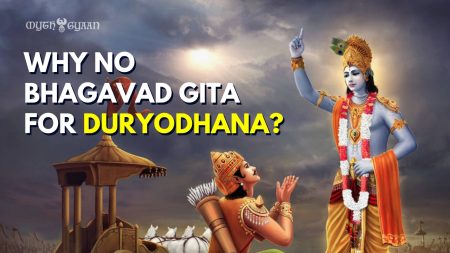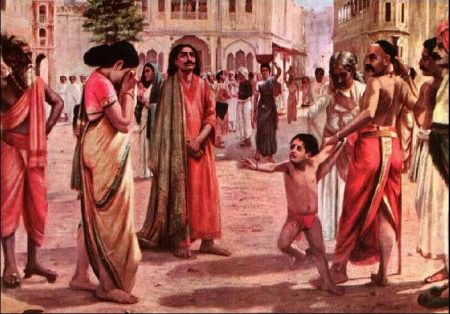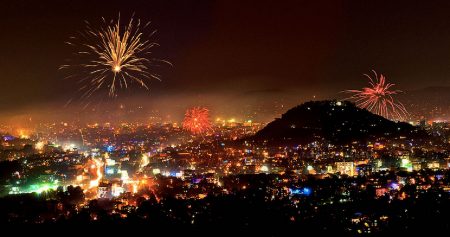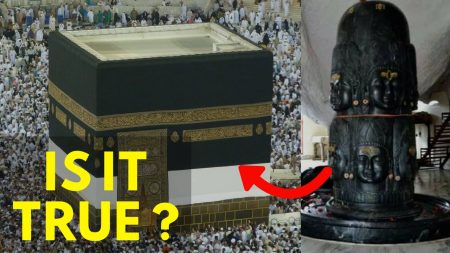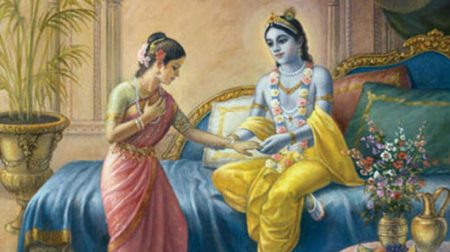7 Reasons – Why Mahashivaratri is celebrated? There are 12 to 13 Shivaratri(s) in a year. It is the day before the new moon. But once in a year around February / March, there is a Mahashivaratri or Mahashivratri.
“Maha” means great and “Ratri” means night. Thus, Mahashivaratri means “Great Night of Shiva”.
Therefore Shivaratri which falls in the month of Maagha (month according to the Hindu calendar) is known as Mahashivratri.
This festival is dedicated to Lord Shiva.
Mahashivaratri in 2021 – Monday, 11th March
It is one of the few Hindu festivals that is celebrated at night. Also, this festival is a solemn occasion in which devotees carry out fasting, meditation, self-study, introspection, etc.
Mahashivaratri is largely celebrated in India as well as in Nepal.
Lord Shiva is considered to be the Adi – Guru (first teacher) from whom yogic traditions originate. He is also considered to be the ideal husband. Therefore unmarried women on this day, pray for a husband like Shiva.
Table of Contents
- 7 Reasons – Why Mahashivaratri is celebrated:
- 1.1 (1) The manifestation of Lord Shiva as a column (pillar) of fire – Jyotirlinga (अग्नि स्तम्भ):
- 1.2 (2) When Shiva drinks Poison:
- 1.3 (3) HaraRatri in Kashmir Shaivism – Shiva appeared as Jwalalinga:
- 1.4 (4) Wedding Anniversary of Shiva and Parvati – Mahashivaratri:
- 1.5 (5) Shiva performs the dance of Creation, Preservation, and Destruction:
- 1.6 (6) When people on Earth worshipped Lord Shiva – Mahashivaratri:
- 1.7 (7) When Lord Shiva blessed a hunter:
7 Reasons – Why Mahashivaratri is celebrated:
(1) The manifestation of Lord Shiva as a column (pillar) of fire – Jyotirlinga (अग्नि स्तम्भ):
According to Shiva Purana, once there is a fight between two Gods, Lord Vishnu and Lord Brahma, who is the supreme God?
They both started arguing and soon this argument turns into a fierce war. Frightened by this fierce war, devas (gods) prayed to Lord Shiva to intervene.

Shiva manifested (ज़ाहिर करना) himself in the form of a huge column of fire – Jyotirlinga (अग्नि स्तम्भ) and appears before Vishnu and Brahma.
Amazed by this wonderful phenomenon, Vishnu and Brahma decided to find the end of this huge column of fire.
Vishnu went to the bottom and Brahma went up in search of the top. Lord Vishnu failed to discover its end and returned.
But Brahma in his journey towards the top, saw some Ketaki flowers falling. He requested the flowers to lie in front of Vishnu that “Brahma has found the top and I am the witness for the same”.
This trickery of Brahma angered Lord Shiva and he appeared before them in his visible form. He told them that there is no beginning and end to this column of fire.
Pleased with Vishnu for adhering to the truth, he blessed him. And enraged by the trickery of Brahma, Shiva told him that he will never be worshipped by the people.
Realizing their mistake of fighting with each other, both Vishnu and Brahma worship Lord Shiva.
Delighted by the worship, Lord Shiva declared, “From now on, this day will be famous as “Shivaratri”, the holiest of holy days pleasing to me”.
(2) When Shiva drinks Poison:
According to a popular belief, on this day Lord Shiva drinks the poison (हलाहल) to protect the universe. The story goes like this. During the churning of the ocean (समुद्र मंथन), many things come out of it as a result.

Deadly poison also comes out of the ocean and threatens to destroy the world. Lord Shiva drinks the poison in order the protect the universe from it.
It is believed that gods danced all night to keep Shiva awake and protect him from the evil effects of the poison.
Ultimately, it does not harm Lord Shiva and the poison gets stuck in his neck (due to his consort Devi Parvati). Thus he came to be known as Neelkantha (one with a blue neck) as due to poison, his neck becomes blue in color.
Since then, it is celebrated as “Maha Shivaratri”.
(3) HaraRatri in Kashmir Shaivism – Shiva appeared as Jwalalinga:
In Kashmir Shaivism, Mahashivratri is celebrated as HaraRatri or Haerath or Herath. It is also known as “Bhairavotsva” or the “Bhairava festival” in the Tantric texts of Kashmir.
Also in Kashmir Shaivism, Shivaratri is celebrated on the 13th of February / March and not on 14th as in the rest of the country.
Hara is another name of Shiva.
People believe that on this day, Shiva is said to have appeared in the form of Jwalalinga or linga of flame. [Source]

Once, Bhairavi (another name of Shakti or Parvati or Paramasakti Mahamaya) created Vatuka Bhairava & Ramana Bhairava to protect Yoginis (also her own creation) and ward away the Svacchanda Bhairava, a terrible and terrifying form of Lord Shiva.
After disappearing, Shiva again re-appeared before them but this time in the form of a Jwalalinga (huge column of fire).
Both Ramana and Vatuka approached Jwalalinga and tries to find out the beginning and end of this huge column of fire.
Vatuka went up in search of the top and Ramana went to the bottom in search of the root. Both of them failed to discover either the beginning or its end. Exasperated and terrified, they began to sing the praises of the Jwalalinga.
At that time, all the yoginis merged with Paramasakti and she merged herself with the awe-inspiring Jwalalinga. Thus from then onwards it is celebrated as Shivaratri or Mahashivaratri.
(4) Wedding Anniversary of Shiva and Parvati – Mahashivaratri:

According to popular belief, this is the night when Lord Shiva and Goddess Parvati got married. Thus this day is celebrated as the wedding anniversary of Shiva and Parvati.
Also in Kashmir Shaivism, there is a popular belief that every Kashmiri girl is Parvati and is wedded to Shiva. Thus Shivaratri symbolizes the union.
(5) Shiva performs the dance of Creation, Preservation, and Destruction:
According to a legend, on this night, Lord Shiva performs the heavenly dance of Creation, Preservation, and Destruction.

By chanting the hymns of Shiva and reading scriptures of Shiva, devotees join this cosmic dance.
That’s why Lord Shiva is also worshipped as “Nataraja” – the lord of the dance.
(6) When people on Earth worshipped Lord Shiva – Mahashivaratri:
According to a popular belief, once Devi Parvati pleaded to Lord Shiva to protect Earth and its people, whenever destruction is approaching.
Lord Shiva agrees to this on the condition that he protects them only when they worship him with complete dedication.
From then onwards, that day is celebrated as Mahashivaratri. It is also believed that the day after Mahashivratri, flowers blossomed, hinting at the fertility of the Earth.
Lord Shiva is also the “God of Fertility”.
(7) When Lord Shiva blessed a hunter:
This story is narrated by Bhishma during the Mahabharata war while resting on his deathbed.
According to this story, once there was a hunter. He was returning to his house. At that time a tiger chased him.
To escape from the tiger, the hunter climbed a tree which was a Bilwa (Bel) tree whose leaves are used in the worship of Lord Shiva.
The tiger also went under the tree and sat there waiting for the hunter to come down.
The hunter was so scared of the tiger that he did not descend from the tree and could not sleep all night.
To stay awake all night, he plucked the leaves of the tree and started throwing them down. He was unaware of the fact that there is a Shiva Lingam under the tree.
Leaves thrown by him started falling on Shiva Lingam. This way he was awake all night and unknowingly worshipped Lord Shiva.
When the morning came, the tiger went away and the hunter also proceeded towards his house.
When he reached home and was about to eat, a strange person came to his house and started asking for food.
The hunter irrespective of being hungry all night gave food to that stranger before eating. After that, he took his food.
Lord Shiva was very pleased with this unknown devotion of the hunter. Because the hunter unknowingly fasted all night and anointed Shiva Lingam with Bilwa leaves, which is very dear to Lord Shiva, and broke his fast after feeding the other person.
Pleased with this, Lord Shiva blessed him. Thus from then onwards, that night is celebrated as Mahashivratri.
Read More:
- Why Lord Shiva wears a snake around his neck?
- Why Basant Panchami is celebrated? Why people wear yellow clothes?
- Why Makar Sankranti & Pongal is celebrated?


